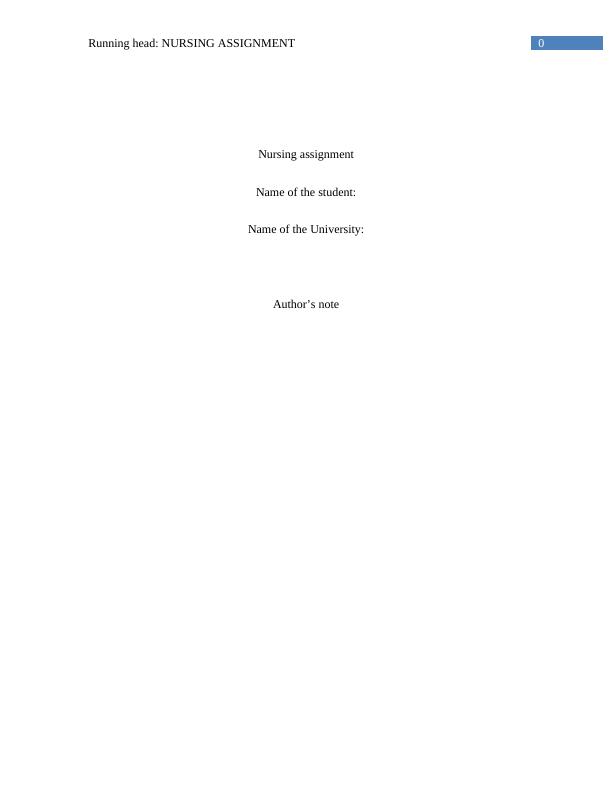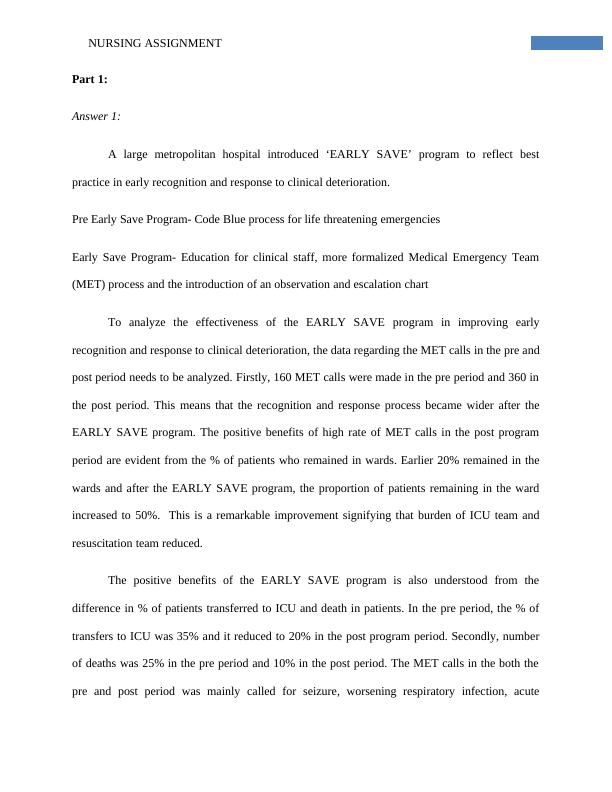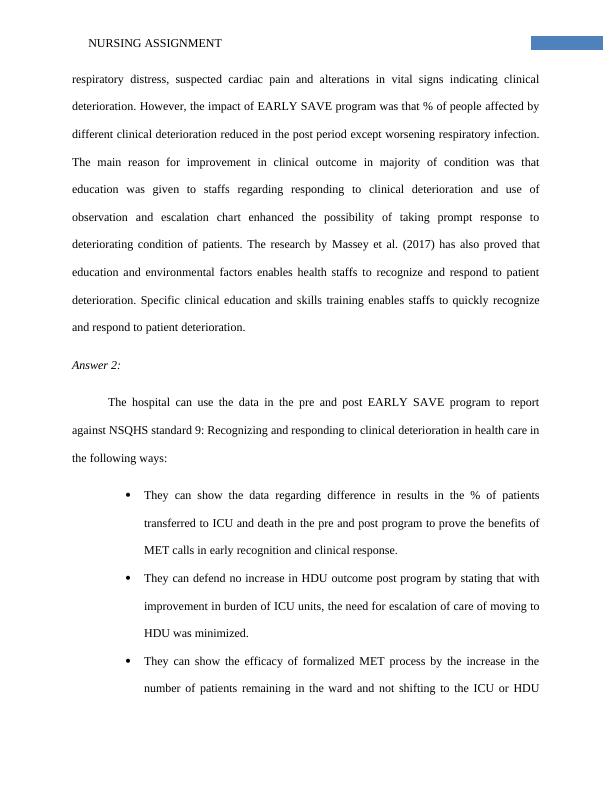CNA153 Nursing Assignment - Early Save Program
Added on 2020-05-11
9 Pages2136 Words88 Views
End of preview
Want to access all the pages? Upload your documents or become a member.
Evidence based practice paper 5 RUNNING HEAD: PRACTICE PAPER Evidence based practice paper Contents Part 1 2 Part 2 4 References 7 Part 1
|8
|1924
|373
Nursing Evidence Based Research Report
|8
|2344
|40
Evidence Based Practice in Healthcare Assignment
|8
|2163
|53
Using Early Save Program to Improve Clinical Conditions in a Hospital
|4
|733
|427
Evidence Based Nursing Research
|10
|2539
|321
Between The Flags: A Program to Recognize and Respond to Deteriorating Patients in NSW Public Healthcare Facilities
|1
|969
|314



